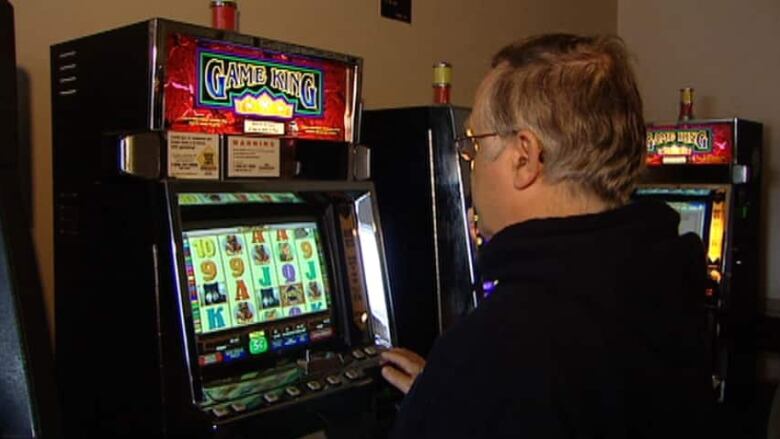VLT revenues in Nova Scotia expected to jump by $27M
Video lottery terminal sales contribute to the amount paid to province by N.S. gaming corporation

Revenue from video lottery terminals in Nova Scotia is projected to grow by a quarter next year, but the province's gaming corporation doesn't view that jump as an indication of moreproblem gambling.
The Nova Scotia Provincial Lotteries and Casino Corporation released its financial outlookin Tuesday's provincial budget.
VLT salesin 2015-2016 were estimatedat $117,000,000.That number is expected to grow to $144,600,000 in 2016-2017.
"The gaming corporation did indeed have over-budget results in 2015-2016," said Bob MacKinnon, CEO of Nova Scotia Provincial Lotteries and Casino Corporation.
A portion of VLT, ticket lottery and casino sales is paid to the province by thegaming corporation.
Understanding the numbers
MacKinnon says the VLT bump was helped bythe absence of My-Play a card-control system meant to stop non-problem gamblers from becoming addicted to video lottery terminals. It was removed by the Liberal government in August 2014.
MacKinnon says My-Play was "a barrier" that blocked those low-risk players.
"What we're seeing is the return of no and low-risk gamblers to the video lottery system. In addition, we've replaced some terminals a couple of years ago and those terminals are resonating with players," MacKinnon said.
But JohnMcMullan, a professor and gambling expert at Saint Mary's University, says sales canbe an indicator ofproblem gambling.
"The number is surprising," he said."It's also worrying. It's worrying because if it is correct, it suggests that there will be an enormous increase on wagering activity on VLT machines and potential revenue generated to the province."
MacKinnonsays despite the projected $27 million increase, annual VLTrevenue for the government has gone down over the last decade.
- VLT revenues rising in Nova Scotia after My-Play killed
- OPINION |Graham Steele: VLT gambling there's more to the story
No plans for new 'safety belt'
Problem gambling is measured "from time to time," MacKinnon says, using the Canadian Problem Gambling Index.
"Our concern is to ensure that we've got a sustainable and accountable gambling system that's socially responsible as possible. And responsible gambling is our top priority," he said.
According to that index, 0.9 per cent of Nova Scotians sampled in 2007 were identified as problem gamblers; 3.6 per cent were identified as low-risk gamblers.
McMullan says he has a hard time believing low-risk gamblers alonecould cause such a huge projected jump. He saysthe province should be looking at new ways to provide gamblers, addicted or not, a new "safety belt" when using VLTs.
"I don't think awareness is the issue," he said. "It seems to me that better strategy is to address the actual technologies itself."
MacKinnon says the corporation's responsible gambling programs will be reviewed this year, but My-Play will not be reconsidered.












_(720p).jpg)


 OFFICIAL HD MUSIC VIDEO.jpg)
.jpg)



























































































